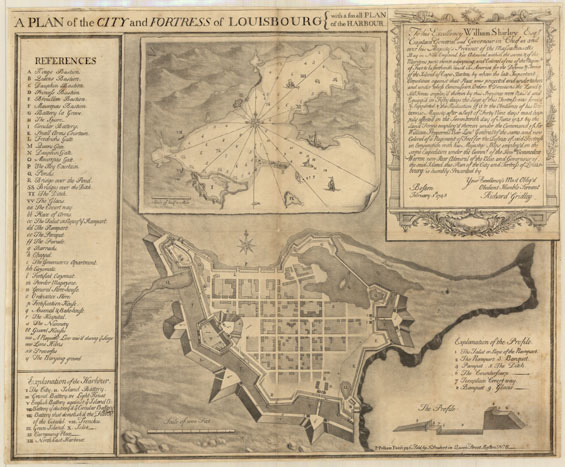|
|
 By the Treaty of Utrecht (1713), the French surrendered Nova Scotia (Acadia) to England but retained Isle Royale (Cape Breton Island) and Isle St. Jean (Prince Edward Island). To protect these islands as well as the fisheries and the approaches to the St. Lawrence River, France constructed the Fortress of Louisbourg. The walls of Louisbourg also protected a town (consequently, “fortress” rather than “fort”), and its location on a fine harbor made it one of the chief ports of North America. On June 17, 1745, during the King George’s War, the garrison at Louisbourg surrendered to New England forces commanded by William Pepperrell and a Royal Navy squadron under Admiral Peter Warren. |
|
|

|
|
“A Plan of the City and Fortress of Louisbourg, with a Small Plan of the Harbour.” Drawing by Richard
Gridley, 1745, engraving by P. Pelham. |
